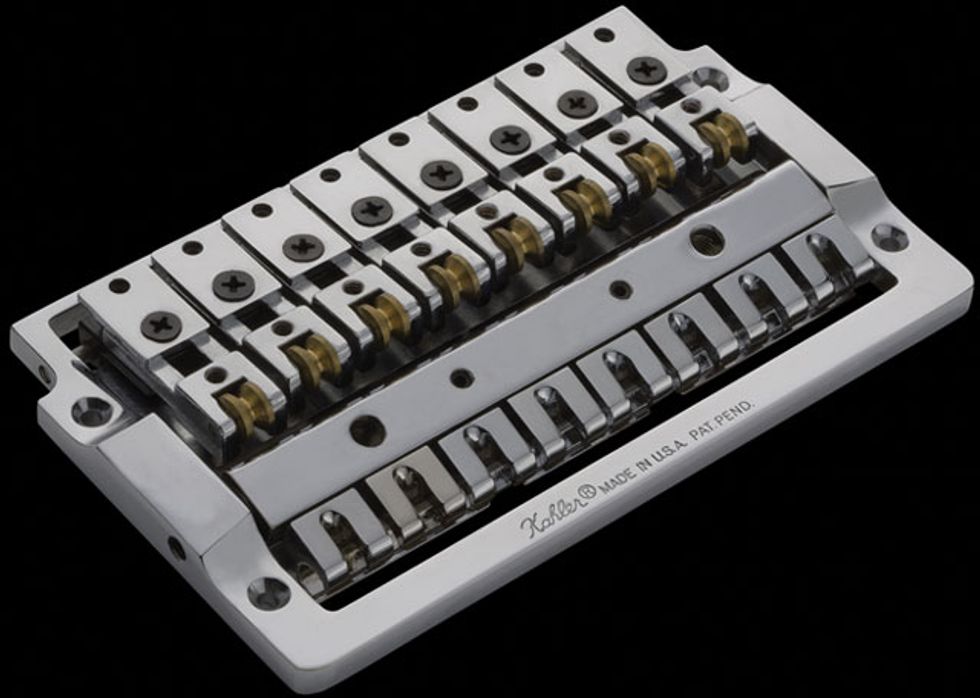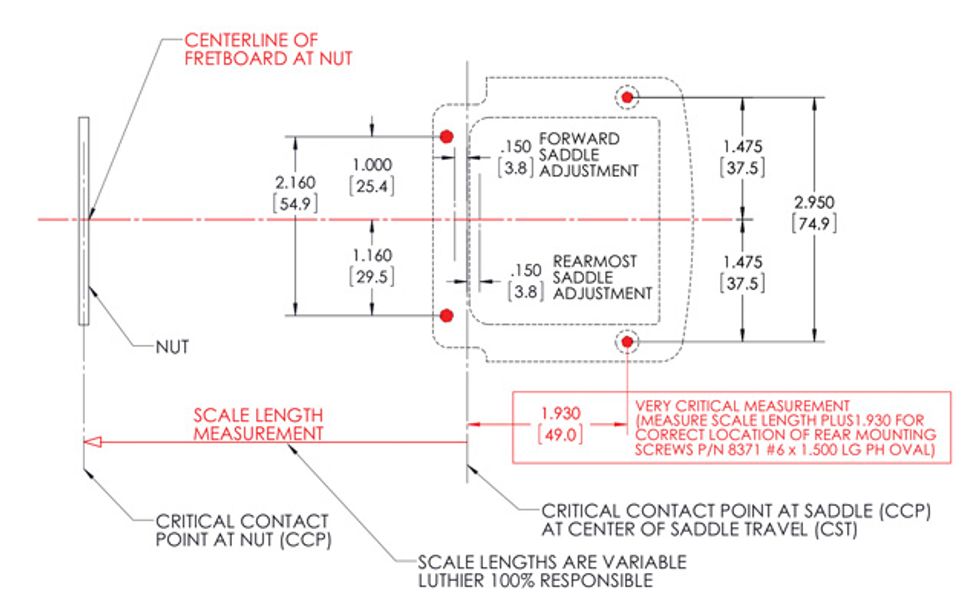Bass trems may seem like a gimmick at first, but there's more to them than meets the eye.
Recently I was looking into bass tremolos—or more accurately, bass vibrato systems. Do you remember these? I haven’t actually seen one in at least a decade, but if you do a little research you’ll discover a few fan clubs, a couple of reviews, and some related websites. If you join a forum or fan club, you’ll be rewarded with the usual photos and video links in your daily mail. As a result, it can suddenly feel as if 50 percent of the world’s bass players must be using a tremolo.
I always saw them as a gimmick, a device you’d use a few times. You’d grin during the first few dive bombs and soon forget about it. Have bass trems been hiding all this time? Or did I simply miss the fact that some of our most prominent bass icons—including Les Claypool, Stanley Clarke, Tony Levin, Jonas Hellborg, Dave LaRue, and Victor Wooten—have been using these devices regularly and, more importantly, very musically. Stepping onstage and doing a full dive bomb will surely get you a lot of attention, but there’s a lot more you can do with a bass trem.
Before someone gets mad about using the term “tremolo,” allow me to clarify: “Tremolo” is a periodical volume change. “Vibrato” is a periodical frequency or pitch change. What we’re talking about here is a vibrato unit, but Leo Fender used the term “tremolo” for the Stratocaster and—as in many other cases—the rest is history. So don’t blame me. Calling it a “whammy” is a nice way to avoid the entire debate.
Some background. Historically, guitarists have had access to whammy devices since the 1930s and early ’40s, but it took way longer for the first bass players to adopt them.
In the adventurous ’80s, the popularity of dive-bombing by shred guitarists seemed to have had a “me-too” effect on bassists. During this time, more and more bass players stepped to the front of the stage and bass whammies came right along with them.
Interestingly, the British manufacturer Burns developed a short-scale, vibrato-equipped Vista-Sonic 6-string bass in 1962. Barry Gibson of Burns London notes that only 30 of these were built. The ’80s saw Alembic modify Bigsby guitar vibratos for bass, Kahler introduced several models, and Steinberger offered a bass version of their TransTrem in 1987.
Today most guitars seem to be equipped with a whammy, yet there’s rarely any mention of bass whammy devices and only a handful of companies make them. Kahler seems to be leading the pack, and here’s a fact that reveals how seriously they take this technology: When Kahler re-entered the market in 2005, their first two models were bass vibratos, and they now have the widest range of models available—even one for 8-string basses (Fig. 1).
A Kahler 8-string bass whammy. That’s some serious hardware! Photo courtesy of kahlerusa.com
Hipshot also started their line in 2005, offering 4- and 5-string Floyd Rose-style models. The most recent manufacturer in this limited market is Bach, a company from the Czech Republic, with their 4-string model.
Considering a retrofit? Once you’ve seen and heard a few examples of cool ways to use a bass whammy, you might want to give it a try too. But there are only a few bass manufacturers that offer whammy-equipped models, so you’ll likely have to search out a used instrument or retrofit one of your own axes.
The parts start at around $100 for the cheapest unit and the only work involved is routing, but this has to be done very carefully. Whether you’re planning to retrofit your cheapest or most expensive bass, consider this: Most retrofitters will and should let a luthier do this work, as the routing also has to take into account bridge position and string alignment and height. In other words, positioning the assembly correctly is crucial for intonation and setup. Take a look at the routing template in Fig. 2. If you don’t grasp the crucial elements within a minute, this job is probably not for you!
If you don’t grasp the crucial elements of this Kahler routing and positioning template within a minute, this job is probably not for you.
Needless to say, this mod is irreversible—or at least it’s economically prohibitive to return a bass to its previous non-trem condition. All trem manufacturers offer routing templates, but the amount of work involved can be very different depending on the device. For example, an integrated-cam mechanism only needs routing from the top, while a fulcrum-style trem requires routing through the complete body and on both top and back.
In some cases, a higher-priced model will require less installation work, and this can more than compensate for its initial cost, compared to a cheaper unit. So it makes sense to think about the total cost before you grab one model over another.
Next time, we’ll take a closer look at what the bass-trem market has to offer.


